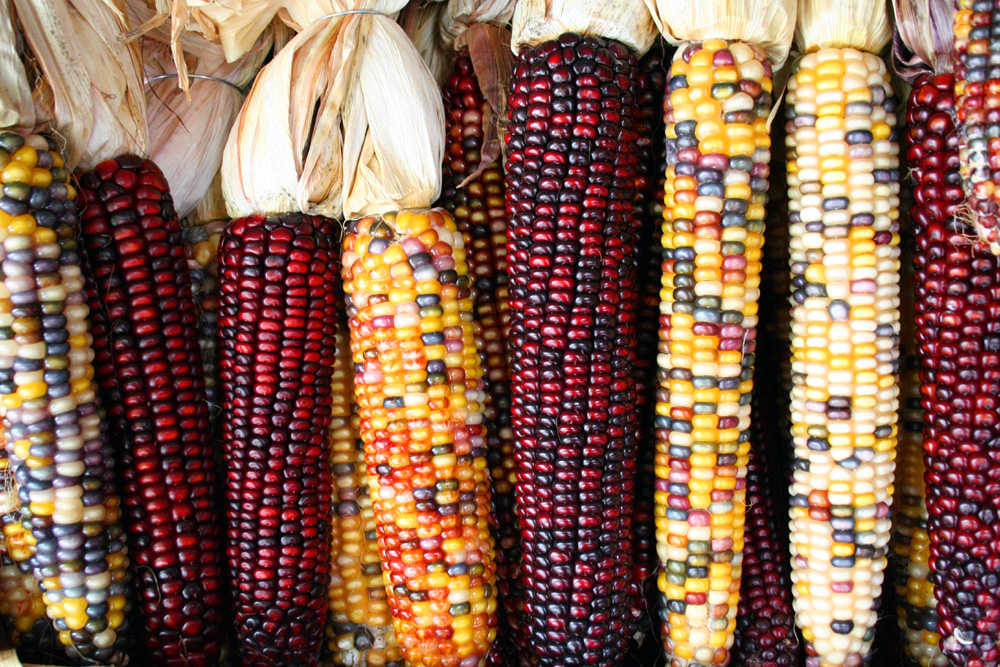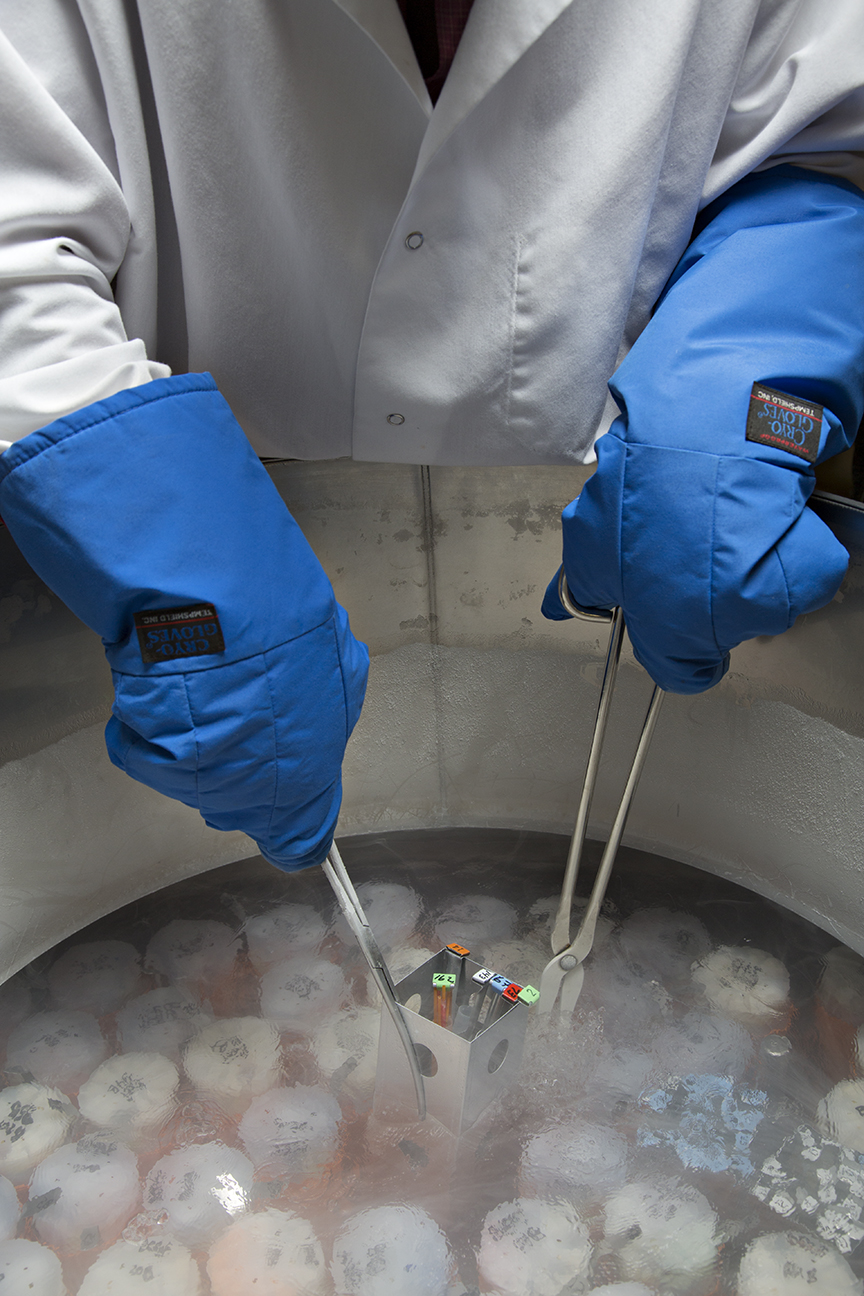|
Recalcitrant Seed
Recalcitrant seeds are seeds that do not survive drying and freezing during ex-situ conservation. By and large, these seeds cannot resist the effects of drying or temperatures less than 10 °C (50 °F); thus, they cannot be stored for long periods like orthodox seeds because they can lose their viability. Plants that produce recalcitrant seeds include avocado, mango, mangosteen, lychee, cocoa, rubber tree, some horticultural trees, aquatic plants such as ''Nymphaea caerulea'''','' and several plants used in traditional medicine, such as species of ''Virola'' and ''Pentaclethra''. Generally speaking, most tropical pioneer species have orthodox seeds but many climax species have recalcitrant or intermediate seeds. Mechanisms of damage The two main mechanisms causing damage to recalcitrant seeds are desiccation effects on the intracellular structures and metabolic damage from the formation of toxic chemicals such as free radicals. An example of the first type of damage would be fo ... [...More Info...] [...Related Items...] OR: [Wikipedia] [Google] [Baidu] |
Apple Mango And Cross Section Edit1
An apple is an edible fruit produced by an apple tree (''Malus domestica''). Apple fruit tree, trees are agriculture, cultivated worldwide and are the most widely grown species in the genus ''Malus''. The tree originated in Central Asia, where its wild ancestor, ''Malus sieversii'', is still found today. Apples have been grown for thousands of years in Asia and Europe and were brought to North America by European colonization of the Americas, European colonists. Apples have Religion, religious and mythology, mythological significance in many cultures, including Norse mythology, Norse, Greek mythology, Greek, and Christianity in Europe, European Christian tradition. Apples grown from seed tend to be very different from those of their parents, and the resultant fruit frequently lacks desired characteristics. Generally, apple cultivars are propagated by clonal grafting onto rootstocks. Apple trees grown without rootstocks tend to be larger and much slower to fruit after plantin ... [...More Info...] [...Related Items...] OR: [Wikipedia] [Google] [Baidu] |
Litchi Root
Lychee (US: ; UK: ; ''Litchi chinensis''; ) is a monotypic taxon and the sole member in the genus ''Litchi'' in the soapberry family, ''Sapindaceae''. It is a tropical tree native to Southeast and Southwest China (the Guangdong, Fujian, Yunnan and Hainan provinces), Assam, Vietnam, Laos, Myanmar, Thailand, Malaya, Jawa, Borneo, Philippines and New Guinea. The tree is introduced into Cambodia, Andaman Islands, Bangladesh, East Himalaya, India, Mauritius and Réunion. The cultivation in China is documented from the 11th century. China is the main producer of lychees, followed by Vietnam, India, other countries in Southeast Asia, the Indian Subcontinent, Madagascar and South Africa. A tall evergreen tree, the lychee bears small fleshy fruits. The outside of the fruit is pink-red, roughly textured, and inedible, covering sweet flesh eaten in many different dessert dishes. Lychee seeds contain methylene cyclopropyl glycine which can cause hypoglycemia associated with outbreaks o ... [...More Info...] [...Related Items...] OR: [Wikipedia] [Google] [Baidu] |
Seedbank
A seed bank (also seed banks or seeds bank) stores seeds to preserve genetic diversity; hence it is a type of gene bank. There are many reasons to store seeds. One is to preserve the genes that plant breeders need to increase yield, disease resistance, drought tolerance, nutritional quality, taste, etc. of crops. Another is to forestall loss of genetic diversity in rare or imperiled plant species in an effort to conserve biodiversity ex situ. Many plants that were used centuries ago by humans are used less frequently now; seed banks offer a way to preserve that historical and cultural value. Collections of seeds stored at constant low temperature and low moisture are guarded against loss of genetic resources that are otherwise maintained in situ or in field collections. These alternative "living" collections can be damaged by natural disasters, outbreaks of disease, or war. Seed banks are considered seed libraries, containing valuable information about evolved strategies to combat ... [...More Info...] [...Related Items...] OR: [Wikipedia] [Google] [Baidu] |
Plant Propagation
Plant propagation is the process by which new plants grow from a variety of sources: seeds, cuttings, and other plant parts. Plant propagation can also refer to the man-made or natural dispersal of seeds. Propagation typically occurs as a step in the overall cycle of plant growth. For seeds, it happens after ripening and dispersal; for vegetative parts, it happens after detachment or pruning; for asexually-reproducing plants, such as strawberry, it happens as the new plant develops from existing parts. Plant propagation can be divided into four basic types: sexual, asexual (vegetative), layering, and grafting. Countless plants are propagated each day in horticulture and agriculture. The materials commonly used for plant propagation are seeds and cuttings. Sexual propagation Seeds and spores can be used for reproduction (e.g. sowing). Seeds are typically produced from sexual reproduction within a species because genetic recombination has occurred. A plant grown from seeds may ... [...More Info...] [...Related Items...] OR: [Wikipedia] [Google] [Baidu] |
Orthodox Seed
Orthodox seeds are seeds which will survive drying and/or freezing during ex-situ conservation, as opposed to recalcitrant seeds, which will not. According to information from the U.S. Department of Agriculture, there is variation in the ability of orthodox seeds to withstand drying and storage, with some seeds being more sensitive than others. Thus some seeds are considered intermediate in their storage capability while others are fully orthodox. One notable example of a long-lived orthodox seed which survived accidental storage followed by controlled germination is the case of the 2,000-year-old Judean date palm (cultivar of ''Phoenix dactylifera'') seed which successfully sprouted in 2005. This particular seed is reputed to be the oldest viable seed, but the upper survival time limit of properly stored seeds remains unknown. See also *Micropropagation *Plant propagation *Seedbank A seed bank (also seed banks or seeds bank) stores seeds to preserve genetic diversity; hence it ... [...More Info...] [...Related Items...] OR: [Wikipedia] [Google] [Baidu] |
Micropropagation
Micropropagation or tissue culture is the practice of rapidly multiplying plant stock material to produce many progeny plants, using modern plant tissue culture methods. Micropropagation is used to multiply a wide variety of plants, such as those that have been genetically modified or bred through conventional plant breeding methods. It is also used to provide a sufficient number of plantlets for planting from seedless plants, plants that do not respond well to vegetative reproduction or where micropropagation is the cheaper means of propagating (e.g. Orchids.) Cornell University botanist Frederick Campion Steward discovered and pioneered micropropagation and plant tissue culture in the late 1950s and early 1960s. Steps In short, steps of micropropagation can be divided into 4 stages. # Selection of mother plant # Multiplication # Rooting and acclimatizing # Transfer new plant to soil Selection of mother plant Micropropagation begins with the selection of plant material to b ... [...More Info...] [...Related Items...] OR: [Wikipedia] [Google] [Baidu] |
Cryopreservation
Cryo-preservation or cryo-conservation is a process where Organism, organisms, organelles, cell (biology), cells, Biological tissue, tissues, extracellular matrix, Organ (anatomy), organs, or any other biological constructs susceptible to damage caused by unregulated chemical kinetics are preserved by cooling to very low temperatures (typically using solid carbon dioxide or using liquid nitrogen). At low enough temperatures, any Enzyme, enzymatic or chemical activity which might cause damage to the biological material in question is effectively stopped. Cryopreservation methods seek to reach low temperatures without causing additional damage caused by the formation of ice crystals during freezing. Traditional cryopreservation has relied on coating the material to be frozen with a class of molecules termed cryoprotectants. New methods are being investigated due to the inherent toxicity of many cryoprotectants. Cryoconservation of animal genetic resources is done with the intentio ... [...More Info...] [...Related Items...] OR: [Wikipedia] [Google] [Baidu] |
Castanea Sativa
''Castanea sativa'', the sweet chestnut, Spanish chestnut or just chestnut, is a species of tree in the family Fagaceae, native to Southern Europe and Asia Minor, and widely cultivated throughout the temperate world. A substantial, long-lived deciduous tree, it produces an edible seed, the chestnut, which has been used in cooking since ancient times. Description ''C. sativa'' attains a height of with a trunk often in diameter. Around 20 trees are recorded with diameters over including one in diameter at breast height. A famous ancient tree known as the Hundred Horse Chestnut in Sicily was historically recorded at in diameter (although it has split into multiple trunks above ground). The bark often has a net-shaped (retiform) pattern with deep furrows or fissures running spirally in both directions up the trunk. The trunk is mostly straight with branching starting at low heights. The oblong-lanceolate, boldly toothed leaves are long and broad. The flowers of both sexe ... [...More Info...] [...Related Items...] OR: [Wikipedia] [Google] [Baidu] |
Rocky Mountain Research Station
The Rocky Mountain Research Station (RMRS) is one of five regional units that make up the US Forest Service Research and Development organization — the most extensive natural resources research organization in the world. The station headquarters are located in Fort Collins, Colorado. Research is structured within 8 science program areas. The Station employs over 400 permanent full-time employees, including roughly 100 research scientists. Research program areas Air, Water and Aquatic EnvironmentsAldo Leopold Wilderness Research InstituteFire, Fuel, and Smoke ScienceForests and Woodlands Ecosystems ResearchGrassland, Shrubland and Desert EcosystemHuman DimensionsInventory, Monitoring and Analysis ScienceWildlife and Terrestrial Ecosystemsref name="rms-rsd"> Laboratories Forestry Sciences Laboratory, Albuquerque, NMForestry Sciences Laboratory, Bozeman, MTFire Sciences Laboratory, Missoula, MTAquatic Sciences Laboratory Boise, ID Forestry Sciences Laboratory, Flagstaff, AZHeadquar ... [...More Info...] [...Related Items...] OR: [Wikipedia] [Google] [Baidu] |
Acorn
The acorn, or oaknut, is the nut of the oaks and their close relatives (genera ''Quercus'' and '' Lithocarpus'', in the family Fagaceae). It usually contains one seed (occasionally two seeds), enclosed in a tough, leathery shell, and borne in a cup-shaped cupule. Acorns are long and on the fat side. Acorns take between 5 and 24 months (depending on the species) to mature; see the list of ''Quercus'' species for details of oak classification, in which acorn morphology and phenology are important factors. Etymology The word ''acorn'' (earlier ''akerne'', and ''acharn'') is related to the Gothic name ''akran'', which had the sense of "fruit of the unenclosed land". The word was applied to the most important forest produce, that of the oak. Chaucer spoke of "achornes of okes" in the 14th century. By degrees, popular etymology connected the word both with "corn" and "oak-horn", and the spelling changed accordingly. The current spelling (emerged 15c.-16c.), derives from asso ... [...More Info...] [...Related Items...] OR: [Wikipedia] [Google] [Baidu] |
Hardwood
Hardwood is wood from dicot trees. These are usually found in broad-leaved temperate and tropical forests. In temperate and boreal latitudes they are mostly deciduous, but in tropics and subtropics mostly evergreen. Hardwood (which comes from angiosperm trees) contrasts with softwood (which is from gymnosperm trees). Characteristics Hardwoods are produced by angiosperm trees that reproduce by flowers, and have broad leaves. Many species are deciduous. Those of temperate regions lose their leaves every autumn as temperatures fall and are dormant in the winter, but those of tropical regions may shed their leaves in response to seasonal or sporadic periods of drought. Hardwood from deciduous species, such as oak, normally shows annual growth rings, but these may be absent in some tropical hardwoods. Hardwoods have a more complex structure than softwoods and are often much slower growing as a result. The dominant feature separating "hardwoods" from softwoods is the presence o ... [...More Info...] [...Related Items...] OR: [Wikipedia] [Google] [Baidu] |
Free Radical
A daughter category of ''Ageing'', this category deals only with the biological aspects of ageing. Ageing Ailments of unknown cause Biogerontology Biological processes Causes of death Cellular processes Gerontology Life extension Metabolic disorders Metabolism Old age Time in life Wikipedia categories named after diseases and disorders {{CatAutoTOC ... [...More Info...] [...Related Items...] OR: [Wikipedia] [Google] [Baidu] |



.jpg)


